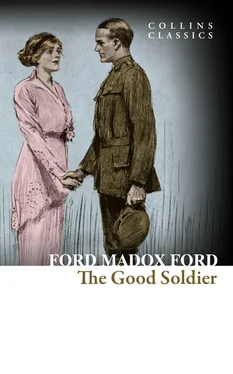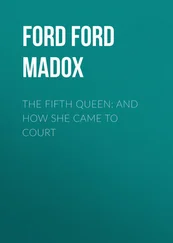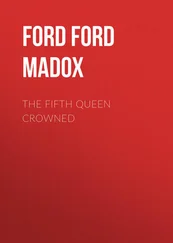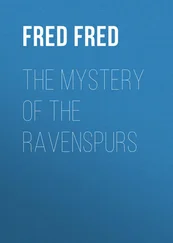A TALE OF PASSION

Copyright CONTENTS Cover Title Page Copyright History of William Collins Life & Times Part One Chapter 1 Chapter 2 Chapter 3 Chapter 4 Chapter 5 Chapter 6 Part Two Chapter 1 Chapter 2 Part Three Chapter 1 Chapter 2 Chapter 3 Chapter 4 Chapter 5 Part Four Chapter 1 Chapter 2 Chapter 3 Chapter 4 Chapter 5 Chapter 6 Classic Literature: Words and Phrases About the Publisher
William Collins
An imprint of HarperCollinsPublishers
1 London Bridge Street,
London SE1 9GF
WilliamCollinsBooks.com
This eBook edition published by William Collins in 2016
Life & Times section © HarperCollinsPublishers Ltd
Gerard Cheshire asserts his moral right as author of the Life & Times section
Classic Literature: Words and Phrases adapted from Collins English Dictionary
Cover by e-Digital Design
Cover image: © Illustrated London News Ltd/Mary Evans
A catalogue record for this book is available from the British Library
All rights reserved under International and Pan-American Copyright Conventions. By payment of the required fees, you have been granted the non-exclusive, non-transferable right to access and read the text of this e-book on-screen. No part of this text may be reproduced, transmitted, down-loaded, decompiled, reverse engineered, or stored in or introduced into any information storage and retrieval system, in any form or by any means, whether electronic or mechanical, now known or hereinafter invented, without the express written permission of HarperCollins
Source ISBN: 9780008167547
Ebook Edition © May 2016 ISBN: 9780008167554
Version: 2016-04-20
CONTENTS
Cover
Title Page THE GOOD SOLDIER A TALE OF PASSION
Copyright
History of William Collins
Life & Times
Part One
Chapter 1
Chapter 2
Chapter 3
Chapter 4
Chapter 5
Chapter 6
Part Two
Chapter 1
Chapter 2
Part Three
Chapter 1
Chapter 2
Chapter 3
Chapter 4
Chapter 5
Part Four
Chapter 1
Chapter 2
Chapter 3
Chapter 4
Chapter 5
Chapter 6
Classic Literature: Words and Phrases
About the Publisher
History of William Collins CONTENTS Cover Title Page THE GOOD SOLDIER A TALE OF PASSION Copyright History of William Collins Life & Times Part One Chapter 1 Chapter 2 Chapter 3 Chapter 4 Chapter 5 Chapter 6 Part Two Chapter 1 Chapter 2 Part Three Chapter 1 Chapter 2 Chapter 3 Chapter 4 Chapter 5 Part Four Chapter 1 Chapter 2 Chapter 3 Chapter 4 Chapter 5 Chapter 6 Classic Literature: Words and Phrases About the Publisher
In 1819, millworker William Collins from Glasgow, Scotland, set up a company for printing and publishing pamphlets, sermons, hymn books, and prayer books. That company was Collins and was to mark the birth of HarperCollins Publishers as we know it today. The long tradition of Collins dictionary publishing can be traced back to the first dictionary William co-published in 1825, Greek and English Lexicon. Indeed, from 1840 onwards, he began to produce illustrated dictionaries and even obtained a licence to print and publish the Bible.
Soon after, William published the first Collins novel; however, it was the time of the Long Depression, where harvests were poor, prices were high, potato crops had failed, and violence was erupting in Europe. As a result, many factories across the country were forced to close down and William chose to retire in 1846, partly due to the hardships he was facing.
Aged 30, William’s son, William II, took over the business. A keen humanitarian with a warm heart and a generous spirit, William II was truly ‘Victorian’ in his outlook. He introduced new, up-to-date steam presses and published affordable editions of Shakespeare’s works and The Pilgrim’s Progress, making them available to the masses for the first time.
A new demand for educational books meant that success came with the publication of travel books, scientific books, encyclopedias, and dictionaries. This demand to be educated led to the later publication of atlases, and Collins also held the monopoly on scripture writing at the time.
In the 1860s Collins began to expand and diversify and the idea of ‘books for the millions’ was developed, although the phrase wasn’t coined until 1907. Affordable editions of classical literature were published, and in 1903 Collins introduced 10 titles in their Collins Handy Illustrated Pocket Novels. These proved so popular that a few years later this had increased to an output of 50 volumes, selling nearly half a million in their year of publication. In the same year, The Everyman’s Library was also instituted, with the idea of publishing an affordable library of the most important classical works, biographies, religious and philosophical treatments, plays, poems, travel, and adventure. This series eclipsed all competition at the time, and the introduction of paperback books in the 1950s helped to open that market and marked a high point in the industry.
HarperCollins is and has always been a champion of the classics, and the current Collins Classics series follows in this tradition – publishing classical literature that is affordable and available to all. Beautifully packaged, highly collectible, and intended to be reread and enjoyed at every opportunity.
Life & Times CONTENTS Cover Title Page THE GOOD SOLDIER A TALE OF PASSION Copyright History of William Collins Life & Times Part One Chapter 1 Chapter 2 Chapter 3 Chapter 4 Chapter 5 Chapter 6 Part Two Chapter 1 Chapter 2 Part Three Chapter 1 Chapter 2 Chapter 3 Chapter 4 Chapter 5 Part Four Chapter 1 Chapter 2 Chapter 3 Chapter 4 Chapter 5 Chapter 6 Classic Literature: Words and Phrases About the Publisher
About the Author
Ford Madox Ford (1873–1939) was an English novelist, poet, critic and editor. He was born Ford Hermann Hüffer, but changed his name due to anti-German sentiment following the First World War. During the war he worked for the War Propaganda Bureau, rallying support from overseas allies and encouraging civilians to sign up. Ford wrote many other novels both before and after The Good Soldier; among his best-known works are The Fifth Queen trilogy, a series of connected historical novels based on Henry VIII’s fifth wife, Catherine Howard, and the Parade’s End tetralogy, written during the post-war years and largely based on life on the Western Front.
Ford’s grandfather was the Victorian realist artist Ford Madox Brown, who specialised in paintings that documented the industrialisation and scientific revolution of England. Ford continued to explore similar ideas – although through a different artistic form – since he was also writing during a period of great societal change and preoccupied with the effect of progress on the human psyche. As science and technology keep our environment in perpetual flux, so human behaviour must adapt as we learn to cope with unexpected circumstances, for better or worse.
The Good Soldier was published in 1915, a year after the start of the First World War, though it is set just before its outbreak. Ford originally intended to call his novel The Saddest Story; however, the proposed title was thought inappropriate so The Good Soldier – sarcastically suggested – became its replacement.
The story, which spans a number of years, is narrated by John Dowell, who forms half of one of the two couples around whom the plot centres.
Читать дальше













